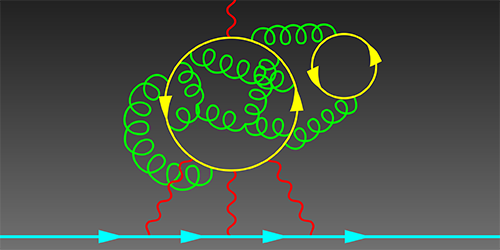Anomalous Magnetic Moment Still Anomalous
Physics advances when observations don’t match theory, so it’s unfortunate that the standard model explains the properties of fundamental particles and fields so well. One rare example where experiments diverge from model predictions is for the strength of a muon’s magnetic moment. Now, using state-of-the-art supercomputer simulations, Thomas Blum at the University of Connecticut, Storrs, and colleagues show that a quantum effect previously considered a likely contributor to the anomalous magnetic moment cannot account for the discrepancy. The result is good news for researchers hoping that this inconsistency signals new physics beyond the standard model.
The best measurements of a muon’s magnetic moment find a value 3.7 standard deviations larger than that of predictions. Before invoking yet-undiscovered physics to explain the anomaly, researchers must exclude known phenomena. One such phenomenon whose contribution is uncertain is “hadronic light-by-light” (HLbL) scattering, where a muon’s magnetic moment is modified because of interactions with a virtual photon. The process is difficult to model accurately because it involves a complex sequence of intermediary interactions, including those with virtual hadrons and with a virtual photon emitted by the muon.
The researchers modeled the process using a simulation that combined quantum electrodynamics (the theory that handles light-matter interactions) and quantum chromodynamics (the theory that describes strong-force interactions inside hadrons). They produced a range of estimates for the HLbL effect and found that its contribution was much too small to explain the anomaly. This theoretical prediction could be tested soon in forthcoming high-precision measurements. If the new measurements match the predictions, it will be another successful application of the standard model. But the researchers say that it will be much more exciting if the discrepancy remains.
This research is published in Physical Review Letters.
–Marric Stephens
Marric Stephens is a freelance science writer based in Bristol, UK.




